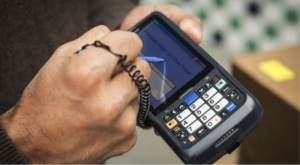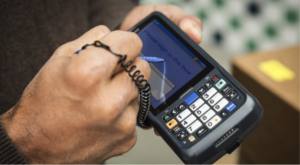 Customers currently running applications that require a legacy Microsoft operating system (Windows CE 6 or Windows Mobile/ Windows Embedded Handheld 6.5) will soon face the end of support for their platform. Mainstream support, which includes regular updates, has ended for both legacy systems. Microsoft extended support (security fixes) will end for Windows CE 6 in early 2018 and for Windows Embedded Handheld 6.5 in early 2020. After those dates, vendors will be unable to provide patches should a vulnerability or error be found in Microsoft code. For this and other reasons, many customers have begun planning a transition to new applications running under a modern operating system.
Customers currently running applications that require a legacy Microsoft operating system (Windows CE 6 or Windows Mobile/ Windows Embedded Handheld 6.5) will soon face the end of support for their platform. Mainstream support, which includes regular updates, has ended for both legacy systems. Microsoft extended support (security fixes) will end for Windows CE 6 in early 2018 and for Windows Embedded Handheld 6.5 in early 2020. After those dates, vendors will be unable to provide patches should a vulnerability or error be found in Microsoft code. For this and other reasons, many customers have begun planning a transition to new applications running under a modern operating system.
As the end of support dates for legacy operating systems approach, customers need to make decisions and plans to move forward, as application development can require considerable time and effort. One way to provide more time to make decisions is to select a hardware offering that can support multiple operating systems. The Honeywell CN75 and CK75 Series mobile computers, along with the Honeywell CN51 mobile computer, offer a choice of Windows Embedded Handheld or Android. In addition, customers purchasing Windows Embedded Handheld can convert their devices to Android at a future date. This allows existing legacy applications to continue running until the organization is ready to move to Android, at which time a simple field-based software conversion is performed. Only a small investment in software is required; no changes are required to the hardware.
Android’s large market presence supports a broad variety of OEMs and hardware form factors, making it more likely that a device is available to meet the customer’s use case and cost requirements, including devices that offer integrated physical keypads.
Talk to us today to learn more!






 a direct thermal option, which prints directly to a label without a ribbon. It also can print linerless labels, translating to absolutely no waste or environmentally unfriendly liners that cannot be recycled.
a direct thermal option, which prints directly to a label without a ribbon. It also can print linerless labels, translating to absolutely no waste or environmentally unfriendly liners that cannot be recycled.